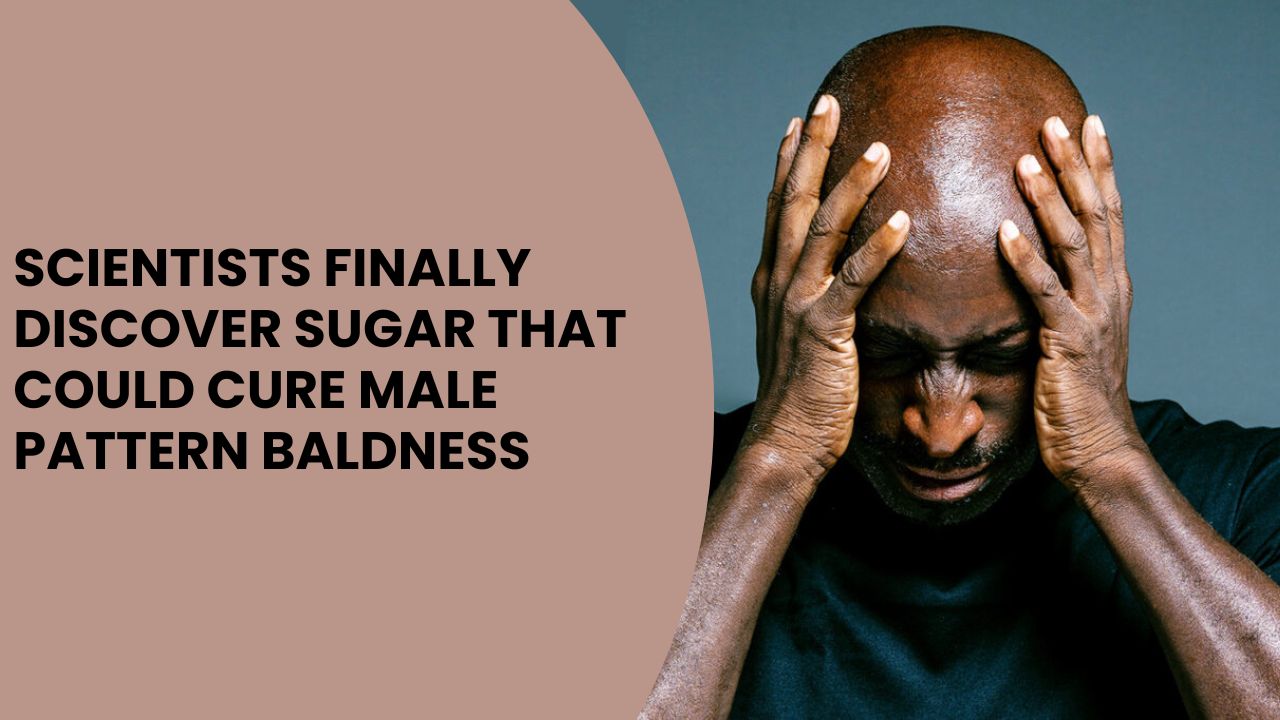Imagine waking up one day to find that scientists have finally made a groundbreaking discovery—a sugar that could potentially cure male pattern baldness! This revolutionary finding has generated a buzz around the world. For years, those suffering from hair loss due to genetics have been in search of effective treatments, and now, it seems the answer may be lurking among the sweet stuff we often take for granted. But what does this discovery really mean? Let’s explore the details!
Understanding Male Pattern Baldness
Before we dive into the sugar discovery, it’s crucial to understand what male pattern baldness actually is. Also known as androgenetic alopecia, this condition affects millions of men worldwide. It typically begins in the late teens to early twenties and can lead to significant thinning or loss of hair on the crown and front of the head. It’s like clockwork—if it runs in your family, you may very well be next in line!
The Science Behind Hair Loss
At the heart of male pattern baldness lies a little troublemaker called dihydrotestosterone (DHT), a derivative of testosterone. This little hormone is known for its ability to shrink hair follicles over time. Imagine your hair follicles as tiny gardens; DHT is like a pest that slowly destroys them, leading to thinning and bald spots. While we can’t control our genetics, researchers have been working hard to find a solution that gives hope to those affected.
The Sugar Discovery: What’s the Buzz?
So, what’s all this chatter about sugar? The recent study has revealed that a specific type of sugar, known as trehalose, could play a crucial role in reversing the effects of DHT on hair follicles. Trehalose is a natural sugar found in various plants and microorganisms—it’s not just a sweetener, it seems to have potent protective properties!
How Trehalose Works
The magic of trehalose lies in its antioxidant properties. Antioxidants are like tiny superheroes that fight off free radicals and prevent cellular damage. When applied to hair follicles, trehalose helps combat the detrimental effects of DHT. Think of trehalose as a shield protecting your hair’s tiny garden from pests. This discovery has led researchers to believe that using trehalose could not only halt hair loss but potentially stimulate new growth! How amazing is that?
The Future of Hair Restoration
With the potential of trehalose, the future of hair restoration looks promising. Imagine being able to enjoy your favorite sugary foods while also feeling more confident about your hair! The research is still in its early stages, and clinical trials will be needed to further explore the effects of trehalose on human subjects. But the mere possibility opens doors to new treatments and solutions that could radically change the landscape for individuals struggling with hair loss.
Combining Old and New Treatments
While trehalose presents a groundbreaking option, let’s not forget that there are existing treatments available. Minoxidil and finasteride have been popular solutions in the fight against male pattern baldness. The emergence of trehalose could potentially work in conjunction with these treatments, enhancing their effectiveness. It’s like mixing old-favorite ingredients to whip up a new, delicious recipe!
Final Thoughts
In conclusion, the discovery of trehalose as a sugar that could cure male pattern baldness is nothing short of thrilling. While we still need more research to fully understand its effects, the potential is palpable. Hair loss doesn’t have to be a lifelong struggle, and with amazing innovations like this, there may soon be hope on the horizon for those affected. Let’s keep our fingers crossed and stay tuned for more updates!
For more ideas, Health, and Diet tips and tricks, please visit us at Supportive Care Options.
FAQs
1. What is male pattern baldness?
Male pattern baldness, or androgenetic alopecia, is a common form of hair loss affecting men, characterized by a receding hairline and thinning on the crown.
2. How does trehalose help with hair loss?
Trehalose has antioxidant properties that protect hair follicles from damage caused by DHT, which is known to shrink hair follicles over time.
3. Are there other treatments for male pattern baldness?
Yes, current treatments include minoxidil and finasteride, both of which have been found to slow down hair loss and encourage regrowth in some individuals.
4. Is trehalose safe for use on hair?
While trehalose is generally considered safe, further research and clinical trials are necessary to fully establish its efficacy and safety on hair follicles.
5. How long before we can expect products containing trehalose?
Timeframes are uncertain, as clinical trials need to be conducted. However, researchers are hopeful that we’ll see advancements in hair care products containing trehalose in the coming years.

